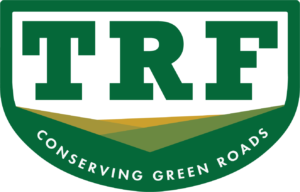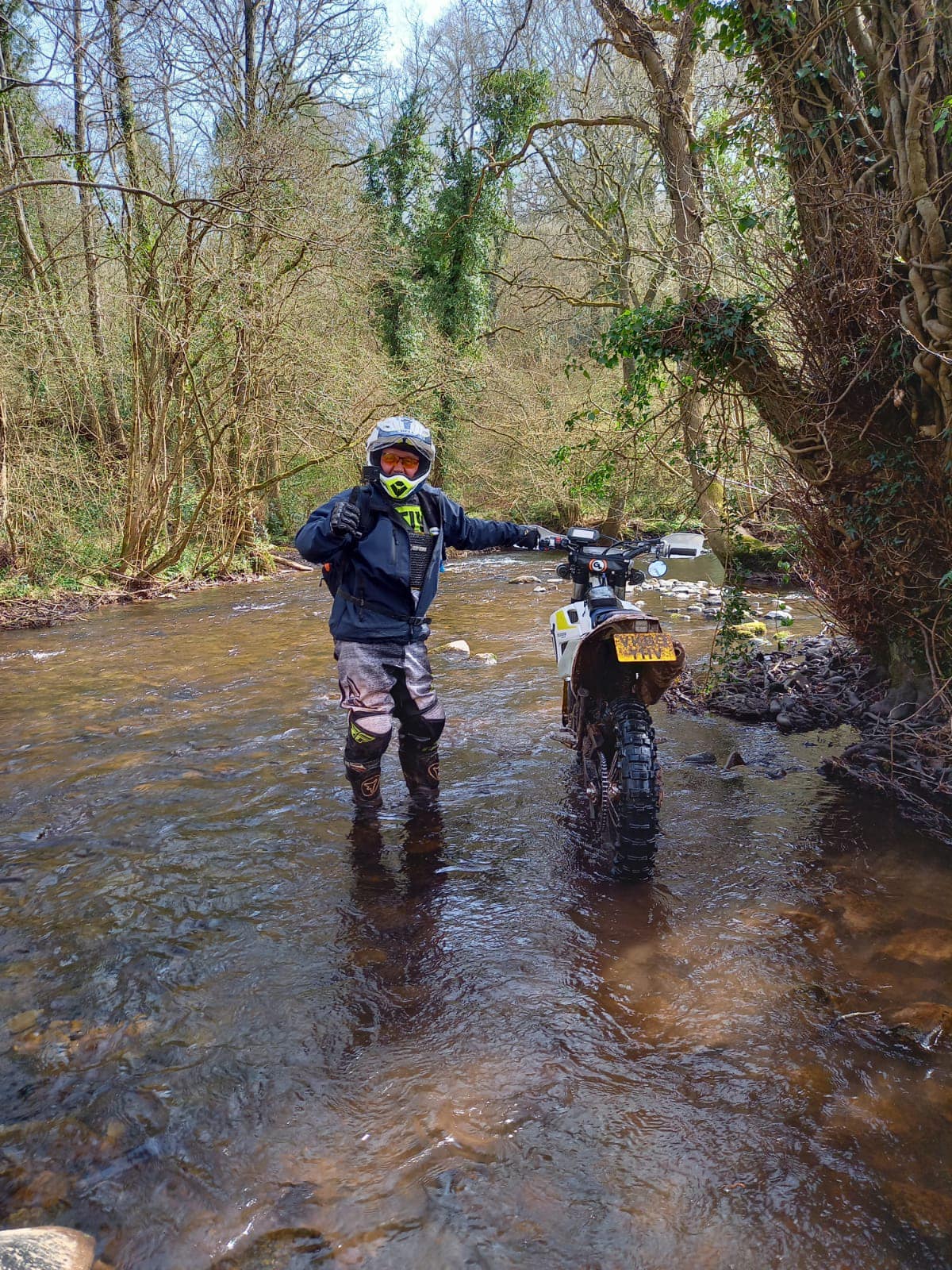Bikes:
What trail bike do I buy??
Members buy what they want or can afford depending on how deep their pockets are. Often riders new to trail riding find they have made a purchase mistake. It’s best to discuss your bike needs with experienced trail riders to make well informed decisions and avoid costly mistakes. Bike and rider must be fully road legal.
Keeping your bike healthy
Ensure your bike is kept well maintained at all times. Use the correct oils, filters, fuel & parts etc. and change at the recommended frequency. Replace worn out parts before they break. Keep maintained to a high standard as Murphy’s law says they will always break down @ the worst opportunity. If your bike is unreliable it will spoil the ride for you and others in the group. If you need advice South Wales TRF members can provide that.
Tyres:
What tyres are best??
There are many manufacturers, as a group we all have our own preference on what we prefer. The most expensive tyres will not make you a better rider 😊. Try a few different brands and find what suits your riding. A number of bikes from new come with tyres which are a compromise for road and trail use. These can be fine in the dry months on less taxing trails. However they can be a liability in wet weather on the trails and make progress hard. So it depends what ratio of tarmac to off tarmac use you expect to ride. Tyres need to be legal for the road. For trail riding a few particular tyres tend to be popular. Again seeking advice from experience members will help you make the right choice.
What size rear tyres are best??
Some members use 120 width and others 140. There is good choice in both sizes. Whatever tyres you choose they need to be road legal and not stamped “NHS” this means “not for highway service”.
What are the right pressures, are tubes OK?
All good and valid questions, but the right answer for you is dependant on a number of variables. Come along to a South Wales TRF meeting and ask whatever trail riding question you have. We are a friendly bunch!
Security:
What security should I buy??
It depends on where your bike is stored and the general property security. Buy as much good quality stuff as you can including ground anchors, quality made chains and locks, cctv etc. Always chain the bike to something to make it harder to move. Majority of bikes when stolen are wheeled or ridden out of the owner’s properties. Take the front or both wheels off and stored them separately. Make it as hard as possible and always chain it up when not being used! Avoid displaying your bike on your drive such as when washing it. Watch out for anyone following you home if your bike is visible, if suspicious drive past home.

Best practise security measures:
Don’t have your bikes on show! When cleaning and maintaining keep out of sight as best as possible. Don’t have the bike idling or revving as noise travels a long way. Don’t advertise on social media what you’ve got. Its yours, you bought it! Do your best to keep it that way.
Clothing:
What clothing and body protection should I wear??
What you wear is your choice. But we advise to buy the best you can afford. With body armour, normally the more expensive the item the better protection is offered. Boots, knee protection, arms, elbows, shoulders, chest & neck. Good quality protection for lower legs and feet, knees, hands, arms, elbows, shoulders, back, chest and neck is a must.
What Helmet should I buy??
Plenty of choices from types with visor, non-visor and goggles. One with a built-in tinted visor is handy for low sun and riding in the summer. It is most important that it fits correctly and has a reliable chin strap that is easy to lock and unlock. A dualsport peak can be quite handy. Flip fronts are available too. Goggles or visor are a personal choice. You are less likely to get a muddy visor on a trail than say in an enduro so you have more choice. Safely glasses with a visor work for some, using the visor on tarmac.
Routes and Navigation:
What is a Green Road??
All Green Roads (G.R’S are under a local authority’s area. They are made up of many names & types. Unclassified Road (UCR) Byway open to all traffic (boat) plus others. They are all legal for trail riding.
How do if find Green Roads??
Once a member of the TRF you will get access to the Green Road Map (GRM) this has been put together by knowledgeable members of the TRF known as Rights of Roads officers (RoR). It is always recommended to also check any routes against up to date OS Maps or similar.
How do I plot routes??
There is various plotting software available including, basecamp, bikehike, memory map, OS Maps online etc. some are free some are subscription based.
Route plotting training
SWTRF offers route plotting training to make you more independent, and to hopefully start to lead rides once you are ready and able to.
What navigation device should I use??
There are navigation units available to fix to your bike. Numerous manufacturers which all pretty much do the same. A phone is also able to have software installed to allow navigation, but we recommend not using your everyday phone as things do break and get lost! Remember the bigger the screen the easier it is to see.
How do I learn to follow a route on a navigation unit??
SWTRF have a navigation training unit which has been donated to us. We fix this to your bike handlebars during a ride and you follow the route leader and observe the route on the screen to build confidence and understanding of visual navigation systems.
What is a GPX file??
Once a plotted route is completed and saved it becomes a GPX file. This file is then transferred to your navigation device and you follow the on-screen directions.
Rideouts:
What is a TRF Rideout??
A group of ideally 6 to 8 riders. Bigger groups can be seen as intimidating and draw unwanted attention. Groups can be spilt up if needed. A ride would comprise of a ride leader (has navigation device or memory knowledge of route) with a ride sweeper or tail ender, again knowledgeable of route. A ride length could be 60 to 200 miles depending on the type of bikes, rider’s experience and time of year. One to one rides can be arranged for newer riders. All rides are at the slowest riders pace and there is no pressure to speed up or tackle anything you’re not happy with. A sense of humour is ideal as there is often lots of banter. What it isn’t is a race or competition so the TRF code of conduct should always be in the back of your mind. We want to ride the trails for years to come.
Ride Leader briefing
Prior to any ride starting off from the meeting point, all riders will sign a ride sheet with declarations of, your fitness to ride, you are aware of the risks of riding green roads, you are joining this ride under your own choice, you and your bike are legally entitled to be on the highways and provide emergency contact details in case of an accident. This is mandatory to be able to join the ride.
How fast do we ride on the Green Roads??
There is a TRF & SWTRF code of conduct with a maximum speed of 25mph. This maximum speed is only achievable while you can see the distance in front to be clear. You never know what or who is around the corner as green roads are used by 4×4’s, farmers, walkers, horse riders, livestock etc. The group rides at a pace that suits the slowest rider. Trail riding is not a race, it is riding to enjoy the lanes and scenery encountered during the day.
How long is a planned Ride??
The distance depends on who has plotted the ride, where the ride is, road work involved in the route, technical sections on the route, many factors. But will always be advertised when the ride is posted. Riding off tarmac for 7-8 hours is hard work and requires a degree of stamina and bike fitness and familiarity to get the bike to do the work for you. For someone new to this hobby 2-3 hrs are tough on the body starting off. Always be honest with yourself on abilities and fitness! If you’re not ready for a long ride don’t do it.
Keeping safe while riding
Always ride at your own pace. This will increase as your riding and confidence improves. Keeping hydrated is a massive part of riding. The use of a hydration back pack is an ideal and recommended system to carry. You drink from a tubed mouthpiece as required. Smaller size for the winter & larger for the summer. Every time you stop for a break or when you have a few minutes have a sip. Little and lots is better than gulping plenty when your parched.
Safe distance between riders:
It’s important to leave a safe distance between yourself and the rider in front for obvious reasons. As speeds are lower on green lanes the group will all be fairly close together. Always keep a close eye on the rider in front and enough distance for you to safely stop in an emergency without hitting them, generally this is normal rules of the road practise. When tackling tricky hill climbs/decents it is best to leave a good distance between yoruself and the rider ahead just in case they stop or fall off or are taking a bit more time to get to the top or bottom. It’s important not to rush the riders ahead. Always think about yours and your fellow riders safety during all rides.

